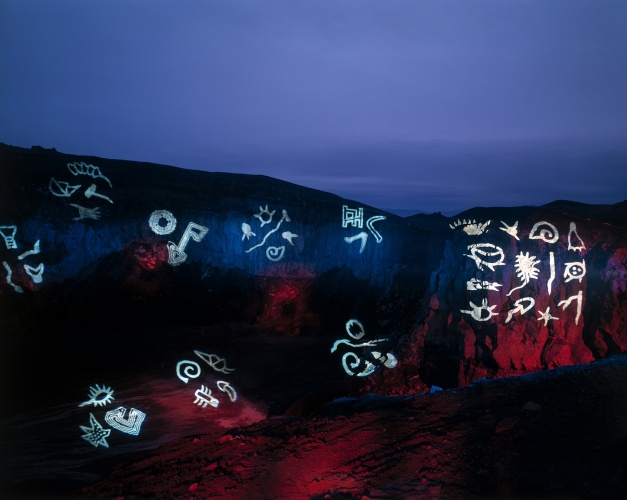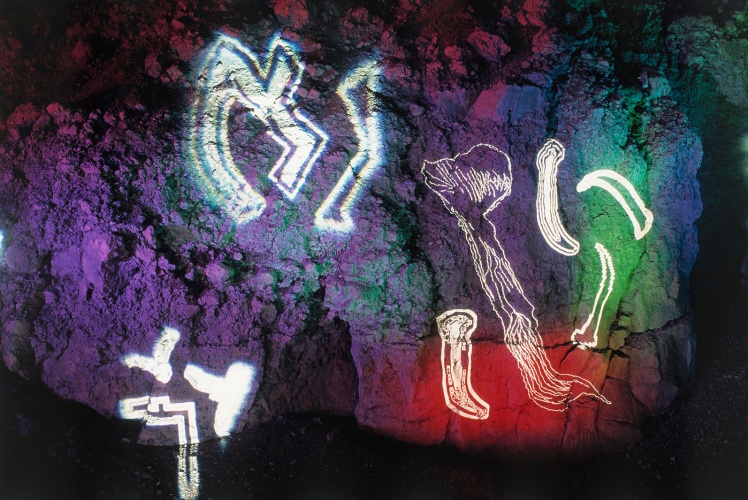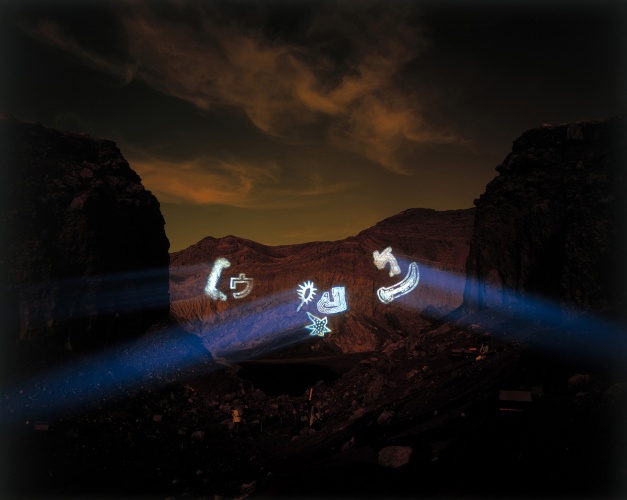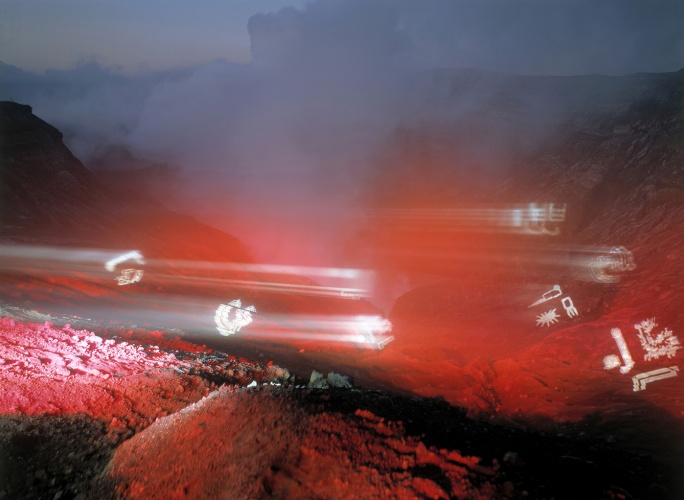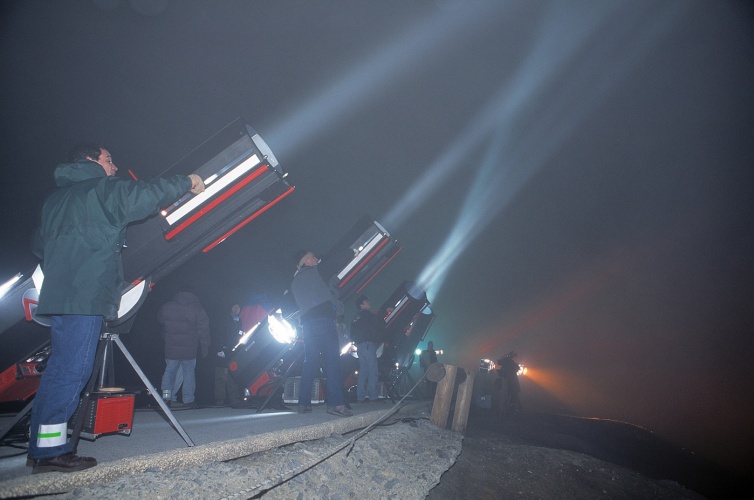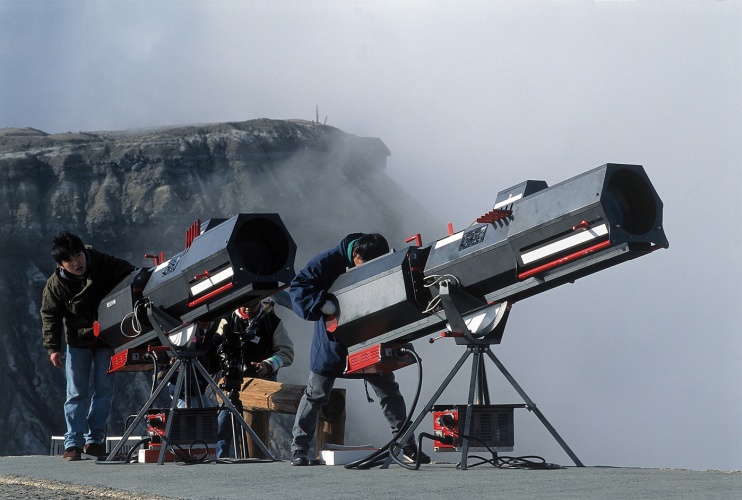Light Works - The Cry from the Earth
Date:
1994
Ref:
0006
Catalogued:
Lucy + Jorge Orta. Light Works, Black Dog Publishing, 2010, ISBN 978-1-907317-04-0
Exhibition history:
Mount Aso Volcano, Kyūshū, Japan
Courtesy:
Lucy + Jorge Orta
By invitation of Asahi Television Corporation Lucy + Jorge Orta were able to realise the most ambitious of their ephemeral Light Works inside the largest volcano in activity in the world, Mount Aso on Kyūshū Island, which was viewed by thirty million spectators, in a meticulously broadcasted television event for the annual New Year’s Eve arts programme.
To define the location, the artists embarked on a two-year research program touring many mythical sites across Japan, including: Buddhist temples, Shinto Shrines, the Zen gardens of Kyoto, the Hiroshima memorial, the island of Okinawa, the UNESCO World Heritage site of Himeji Castle, and even Mount Fuji. During this epic expedition, each location was rigorously analysed, technical feasibility studies conducted and authorisations requested, ruling out sites that would compromise a truly monumental work. The artists collected the natural and cultural imprints of the locations they explored, recording their findings in the form of signs and pictograms in a number of folding calligraphy sketchbooks purchased from the monks in the temples of Kyoto.
It is no coincidence that the artists selected the world’s largest active volcano range, spewing ash and sulphur from the caldera. On the eve of the 50th anniversary of the bombing of Hiroshima and close to the city of Nagasaki, The Cry from the Earth was a highly symbolic ephemeral action, marking an ethical dimension to their practice. Delayed several months due to the volcanic eruptions, the 60-strong crew and several tons of projection and camera equipment were transported to the edge of the crater. The graphic score projected onto the poisonous vapour clouds resonate with the tragic memory of man’s destructive trait, and that of nature’s own hostile forces.
The graphic score diffracting off the volcanic surfaces is composed of the artists’ hand-drawn and digital pictograms as well as image data collected from the volcanic eruptions and coded transcriptions of the electronic audio signals. With recorded sound from the eruptions, the artists also created a sound-scape using Xenakis UPIC sound research technologies. This early technology converts drawings into sound signals and audio recordings into images.
